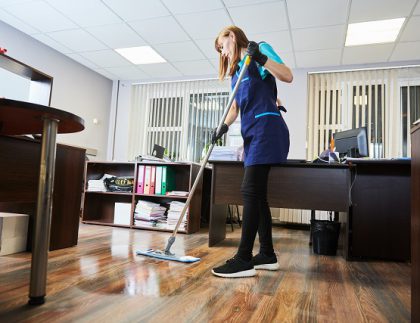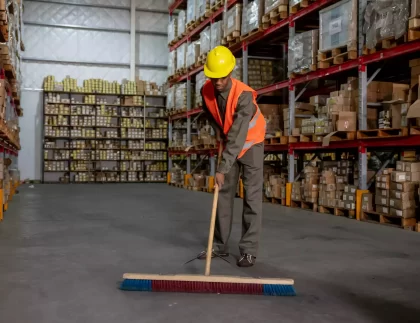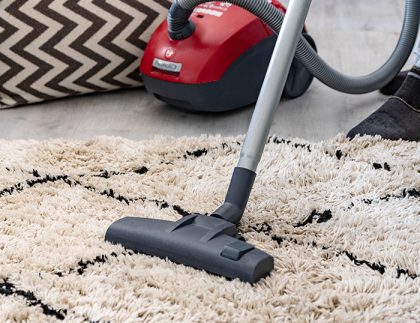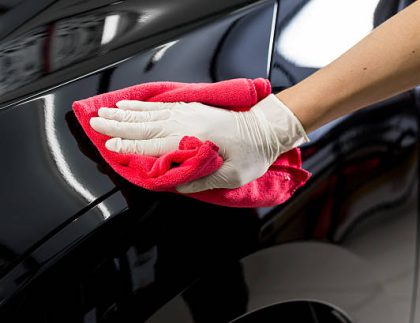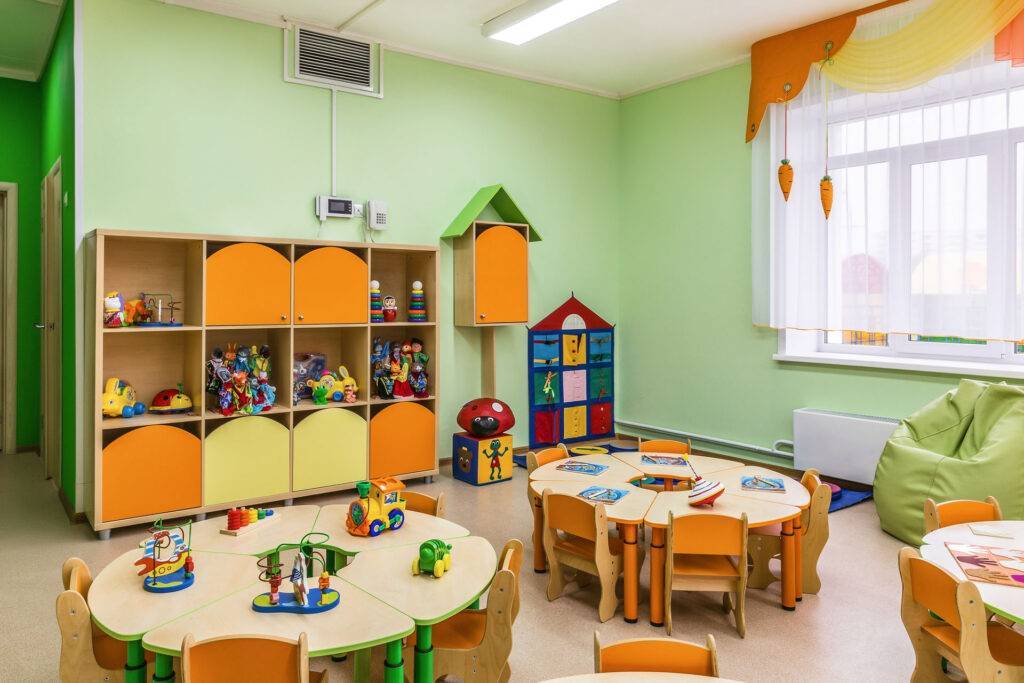
Tips on How to Clean Tables and Chairs in Childcare
Tables and chairs are the backbone of every childcare setting. They support meal times, art projects, reading groups, and even quiet play. Because children spend so much time around these surfaces, they are exposed to constant wear and frequent messes. Spilt food, sticky paint, crayons, marker stains, and countless little fingerprints all leave their mark on tables and chairs every single day. If not cleaned properly, these pieces of furniture can become breeding grounds for germs and allergens, which could easily spread illness among children and staff.
Learning to clean tables and chairs in childcare is not just about appearances. Staff must focus on maintaining health, safety, and comfort while creating an environment where children can learn and grow without unnecessary risks. Following a strong cleaning routine also extends the life of your furniture and reassures parents that their children are in safe hands. In this detailed guide, we will walk you through every aspect of cleaning tables and chairs in childcare, from daily habits to weekly deep cleaning, choosing the right products, and using safe techniques, making childcare cleaning effective and reliable.
Why Cleaning Tables and Chairs in Childcare is So Important?
Unlike in offices or adult spaces, furniture in childcare is constantly touched by many children throughout the day. A single table may be used for breakfast at 8:30, painting at 10:00, and a puzzle activity at 11:30. Chairs may be swapped and shared by multiple children during a single session. With so much contact, germs spread very quickly.
Unclean tables and chairs can result in:
- Transmission of bacteria, viruses, and fungi
- Food residue attracts pests like ants or cockroaches
- Allergens such as dust, pollen, or chemical residue trigger reactions
- Permanent stains and damage shorten the lifespan of furniture
Keeping these surfaces spotless reduces sickness, creates a pleasant learning atmosphere, and upholds the professional image of your childcare facility.
Tables and Chairs in Childcare Complete Guide
Children spend hours at tables and chairs each day, making hygiene essential. Proper commercial cleaning prevents germs, stains, and allergens from spreading. This guide offers simple, safe, and effective tips to keep furniture clean, child-friendly, and professionally maintained.
1. Children’s Tables and Chairs Cleaning with Daily Soap and Water Wipe
Start every cleaning routine with the basics. Mix a small amount of mild dish soap in warm water and wipe down the tables and chairs using a microfiber cloth or sponge. Focus on areas like chair seats, backrests, table surfaces, and armrests, as these are high-contact zones where children touch most often. Always rinse with clean water to remove soap residue and dry completely with a cloth.
Don’t use harsh detergents that may leave chemical residues behind, as these can irritate children’s sensitive skin.
2. Children’s Tables and Chairs Cleaning with Safe Disinfection
After the initial wash, disinfect the tables and chairs to kill germs effectively. Use child-safe disinfectants that are approved for childcare facilities. Spray lightly on surfaces or apply with disposable wipes, making sure to follow the product’s contact time instructions so the disinfectant works properly.
Don’t rely on strong bleach or overly harsh chemicals, as they can release harmful fumes or cause allergic reactions in children.
3. Pay Attention to Hidden Spots in Children’s Tables and Chairs
When cleaning tables and chairs in childcare, it’s easy to overlook the legs, undersides, and edges. Children often touch these hidden spots with sticky fingers or rest their feet against them. Wipe them daily to prevent the buildup of hidden dirt and bacteria.
Don’t skip these hard-to-see areas, as they are often the first places where germs accumulate.
4. Stain Removal for Children’s Tables and Chairs
Food spills, ink marks, and paint splashes are common in childcare. Remove stains as soon as they appear before they set in permanently. For food stains, a paste of baking soda and water works well, while vinegar solutions are great for sticky residues. Ink stains can be treated with rubbing alcohol on a soft cloth. Always act quickly to save time and effort.
Don’t scrub too hard on wooden or plastic surfaces, as aggressive cleaning can scratch and damage the furniture.
5. Deep Cleaning of Children’s Tables and Chairs
Beyond daily wiping, set aside one day a week for deep cleaning. For wooden chairs and tables, polish them with a child-safe wood cleaner to restore shine. Plastic furniture benefits from an all-purpose cleaner to remove grime. If chairs have detachable parts, wash them separately. Vacuum fabric seats thoroughly to remove dust and crumbs.
Don’t allow chairs to stay damp, as moisture can damage joints or encourage mold growth.
6. How to Clean Children’s Tables and Chairs Including Cushions and Upholstery?
If your childcare uses chairs with fabric seats or cushions, pay special attention to them. Vacuum cushions regularly to prevent dust buildup. For spills, spot clean immediately with mild cleaning solutions suitable for upholstery. For deeper cleaning, use child-safe sprays and ensure complete drying before children use them again.
Don’t put damp cushions back in use, moisture encourages bacteria and mold, which can be harmful to kids.
7. Natural Alternatives for Cleaning Children’s Tables and Chairs
Eco-friendly cleaning solutions such as vinegar-and-water, baking soda, and lemon juice are safe and effective for everyday wiping. These natural cleaners reduce chemical exposure for children while keeping furniture fresh. Use them especially for quick cleanups between meals and activities.
Don’t assume natural cleaners disinfect as thoroughly as commercial products. Use them alongside certified disinfectants for balanced hygiene.
8. Proper Drying of Children’s Tables and Chairs
Drying is just as important as washing. After cleaning or disinfecting, always wipe tables and chairs with a dry microfiber cloth or let them air dry naturally. Moisture left on furniture becomes a breeding ground for bacteria and mold.
Don’t stack chairs while they’re still wet, as trapped moisture spreads germs and can damage surfaces.
9. Preventive Cleaning Habits for Children’s Tables and Chairs
Cleaning becomes easier when you reduce how dirty the furniture gets. Teach children simple preventive habits, such as washing hands before meals, using placemats during eating, and keeping art projects on activity-specific tables. These small steps significantly cut down on daily mess.
Don’t depend only on cleaning routines; prevention is equally important to save time and protect the furniture.
10. Professional Support for Children’s Tables and Chairs Cleaning
Even with consistent daily and weekly cleaning, hiring professional childcare cleaning services ensures deeper sanitation. Experts use advanced equipment and hospital-grade disinfectants that eliminate hidden germs and keep furniture in excellent condition. Scheduling regular professional cleaning extends furniture life and reassures parents about safety.
Don’t wait until chairs and tables look visibly dirty; schedule professional cleaning at regular intervals to maintain consistent hygiene.
Key Mistakes to Avoid in Cleaning Children’s Tables and Chairs
- Don’t use bleach directly without thorough rinsing.
- Don’t use abrasive scrubbers that scratch surfaces.
- Don’t leave chairs or tables damp after cleaning.
- Don’t use chemical sprays with strong fragrances around children.
- Don’t ignore regular inspections for cracks, loose screws, or damage.
Final Thoughts
Children use tables and chairs in childcare more in a single day than most furniture does in a week. Because these pieces play a central role in eating, learning, and playing, staff must follow dedicated cleaning routines to keep them safe and hygienic. By washing and sanitizing daily, performing weekly deep cleaning, using child-safe products, and training staff in proper techniques, you can create an environment where children thrive. Preventive measures such as placemats, handwashing, and activity-specific tables also make a big difference. With occasional support from professional services like The Cleanbales, your childcare furniture will stay in excellent condition while protecting the health of every child who uses it.




